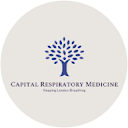In this series of blog posts, I’m talking about knee replacement surgery – everything from anatomy to recovery. If you’ve missed part one (about how the knee works and why you might need a replacement), you can go back and read it, or carry on for today’s post on what you can do to help your recovery before surgery.
Why prehab makes all the difference
John, a 71-year-old former cricketer, came to me just after being placed on the waiting list for his knee replacement. “I’ve been told it could be 14 months. What am I supposed to do until then?” he asked, frustrated after years of deteriorating function.
We started with a comprehensive assessment that revealed significant weakness in his quadriceps, and poor gluteal control. After just eight weeks of targeted exercises, John reported: “I can now walk the dog for 30 minutes without stopping – that’s double what I could do before!”
Research confirms John’s experience isn’t unusual: a systematic review of 48 trials of prehab, involving 3570 patients, showed that prehab intervention significantly improved function, health-related quality of life, muscle strength, and back pain prior to surgery in patients undergoing orthopaedic procedures compared with patient who didn’t have prehab (Punnoose et al, JAMA, April 2023)
What determines your recovery journey?
Your recovery after knee replacement depends on numerous factors – some within your control, others not. You can’t control your genetics, injury history, or the technical aspects of surgery. However, you can dramatically influence two critical factors:
- Your tissue health: Sleep quality, stress management, hydration and nutrition all directly impact tissue healing rates. I’ve written extensively about these foundational aspects in my book and previous blog posts.
- Your prehab programme: This is where you can make the most significant difference while waiting for surgery. Studies show comprehensive prehab can decrease hospital stays, reduce post-op pain, and accelerate return to daily activities.
The Four Pillars of Effective Knee Prehab
There’s no one-size-fits-all prehab programme, as your needs depend on your specific knee function, lifestyle, and goals. To discover what’s best for you personally, I recommend starting with my quick online knee assessment. This initial evaluation helps identify your key priority areas.
Whatever your specific needs, all effective prehab programmes address these four pillars:
1. Control: the foundation of knee function
Before building strength or endurance, you must first establish proper muscular control. Key muscles to focus on include:
- Glutes: These stabilise your hips, which directly influences knee alignment. Poor gluteal control is one of the most commonly overlooked factors in knee rehabilitation.
- Quads: The powerhouse quadriceps muscles at the front of your thigh that straighten your knee.
- Hamstrings: The muscles at the back of your thigh bend your knee and help with rotational control.
- Calves: Your calf muscles are critical for balance, walking mechanics and controlling swelling.
Watch my video on how to test your glutes here
2. Flexibility: creating space for your new knee
The more flexible your knee joint and surrounding muscles before surgery, the easier your post-operative rehabilitation will be. Focus on:
- Knee flexion (bending): Being able to bend your knee to at least 90° before surgery significantly improves early recovery.
- Knee extension (straightening): Full extension is crucial for proper walking mechanics.
- Hip mobility: Often overlooked, hip flexibility significantly impacts knee function.
Watch my knee extension assessment here
3. Strength and Endurance: Building Capacity
Once you’ve established proper control patterns, building strength becomes crucial:
- Progressive loading: Gradually increase challenge through resistance or repetitions.
- Functional movements: Prioritise exercises that mimic daily activities like stairs, standing from sitting, and walking.
- Balance strength across all muscle groups: Don’t focus solely on quadriceps – balanced strength development prevents compensation patterns.
4. Integration: making it functional
Your knee doesn’t work in isolation! Effective prehab integrates:
- Balance and proprioception: Your body’s awareness of position in space.
- Whole-body movement patterns: Incorporating proper mechanics from feet to core.
- Activity-specific training: Tailoring exercises to the activities you want to return to.
Margaret’s story: the difference proper prehab makes
Margaret, now 63, had both knees replaced – one in 2018 and the other in 2022. For her first surgery, she did minimal preparation. “I just waited for my operation date, getting progressively less active,” she told me. Her recovery was challenging, taking nearly six months to feel comfortable walking without support.
Before her second knee replacement, Margaret completed three months of targeted prehab focused on the specific deficits we identified in her assessment. The difference was remarkable – she was walking confidently without crutches at just three weeks and reported 40% less pain compared to her first recovery.
“I wish I’d known how much difference proper preparation would make for my first surgery,” she reflected.
Next steps: discover your personal prehab priorities
While this article has covered essential prehab principles, your specific needs will depend on your unique knee condition, lifestyle, and goals. I’ve developed a comprehensive assessment that helps identify exactly where to focus your prehab efforts.
Take my quick 2-minute knee assessment to discover your key priority areas and get pointed in the right direction for your prehab journey.
This initial assessment is just the starting point – it will help you understand your current knee function and where you might need focused attention. From there, you can explore more comprehensive evaluation options or begin with targeted exercises based on your results.
In my next post, I’ll cover what to expect during recovery after knee replacement surgery and how your prehab efforts directly impact your recovery timeline.







